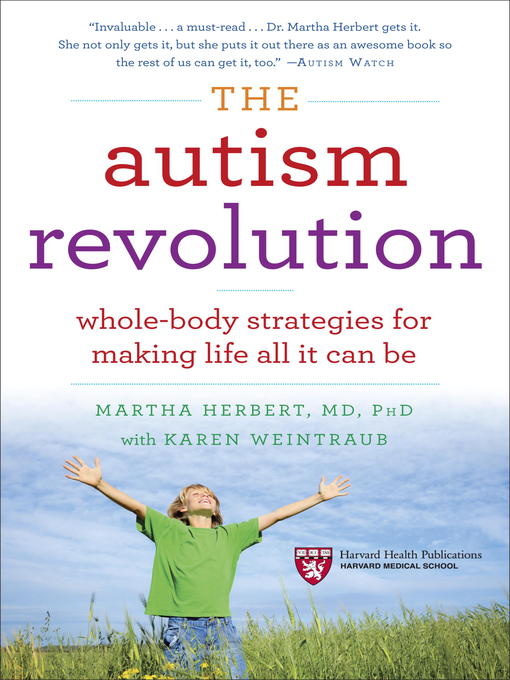
The Autism Revolution
Whole-Body Strategies for Making Life All It Can Be
کتاب های مرتبط
- اطلاعات
- نقد و بررسی
- دیدگاه کاربران
نقد و بررسی

February 1, 2012
A neurologist breaks with professional orthodoxy to shed new light on the diagnosis and treatment of autism. In her debut, Herbert (Neurology/Harvard Medical School) embraces a new framework that goes beyond her experience as a physician and researcher to embrace the hard-won knowledge of patients and their families. She writes that she and her colleagues are now investigating "all sorts of brain and body indicators," including brain scans, environmental factors, metabolism, etc. The author explains that the more she worked with patients the more she was faced with a choice--" 'to see what I believed' or 'believe what I see.' " Either she would accept traditional wisdom that autism was a genetically determined, incurable brain disorder or recognize "the extraordinary capabilities and changes [she] saw in her patients." Taking the latter path, Herbert began to reject the view that autism is a primarily a genetically determined, neurological disorder. She reports anecdotal evidence of remarkable improvement in autistic children who appear to have digestive problems assimilating gluten or casein when these were eliminated from their diet. Herbert also notes that neurologists are "slowly recognizing the many crucial roles played by glial cells" in the brain. These make up 85 percent of the brain and play a critical role in the brain's immune system and facilitate the functioning of neurons. The author speculates that autism may be caused when they malfunction rather than by neurological problems. Her message to caregivers is clear and simple: Autistic symptoms should be treated using a whole body approach--"go for the extraordinary." An important book with broader implications than its specific subject.
COPYRIGHT(2012) Kirkus Reviews, ALL RIGHTS RESERVED.

November 1, 2011
Harvard and Massachusetts General Hospital neurologist Herbert argues that autism is not a deficiency of the brain but the brain's reaction to bodily disorder stemming from various triggers, namely, specific foods, environmental toxins, viruses, and stress. She's courting controversy here, but she is an internationally known expert in the field. And her book is a Harvard Health Publication, which says something; HHP books have big reach. Important for many readers.
Copyright 2011 Library Journal, LLC Used with permission.

March 1, 2012
The frequency of autism diagnoses is on the rise. Better treatments for the disorder are not on the upsurge. Herbert and Weintraub's guide is neither an insurrection nor a radical transformation. Rather, the book reports on genuine success stories of children and adults whose autism improved. Simple tips and safe tactics for assisting individuals with autism are included. Little changes have the potential to bring about significant results. Autism involves the entire body and not just the brain; consequently, the authors emphasize the impact of environment on this illness. Especially important are food, stress, toxins, and microbes. Information about isodicentric chromosome 15, mitochondrial abnormalities, glial cells (the brain's glue ), stimming, and a gluten-free, casein-free (GFCF) diet is presented. Childhood vaccination is encouraged. Providing support to children and reducing the burden of illness on them are crucial. Underestimating their ability to improve should be avoided. Love must be unconditional. Individuals living with autismpatients, family members, and caregiversdon't have it easy. This book does not supply a solution but rather offers commonsense advice and compassion.(Reprinted with permission of Booklist, copyright 2012, American Library Association.)

























دیدگاه کاربران